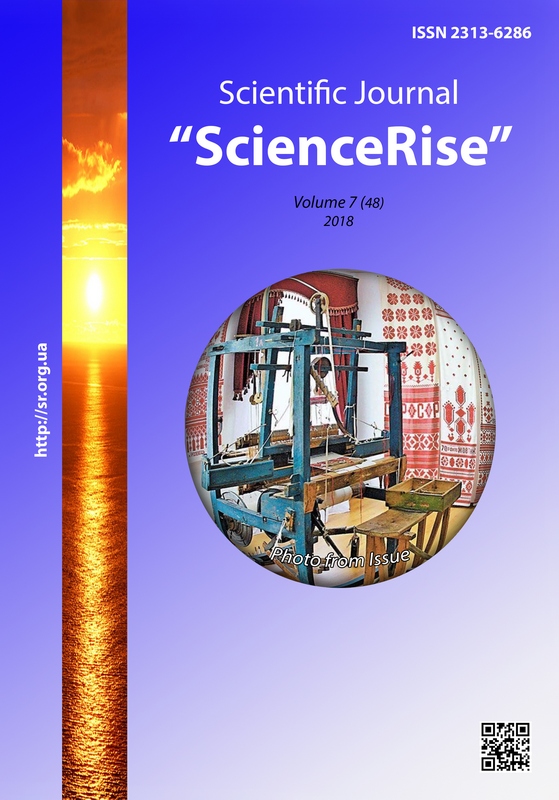Впровадження та місце червоного коліру, як основи в традиційних Кролевецьких рушниках
DOI:
https://doi.org/10.15587/2313-8416.2018.140132Słowa kluczowe:
Кролевецький рушник, Слобожанщина, художній, етнографічний, витвір, ткацтво, червоний колір, композиціїAbstrakt
У статті з'ясовані особливості художнього етнографічного витвору української Слобожанщини – Кролевецький рушника. Розглянута технологія виготовлення сировини для стародавнього ткацького виробництва, а також особливості мотивів в структурі малюнків та кольорів, які використовували майстри. Розставлені акценти впливу на унікальність особливого стилю Кролевецького рушника та їх призначення за композиційним рішенням на особливі події життя мешканців та суспільства в цілому
Bibliografia
Titar, O. V. (2006). Slobozhanschina Culture: Problems of National Identity. Kharkiv: Ryder, 306.
Masliychuk, V. L. (2007). Province at the crossroads of cultures: A study on the history of Sloboda Ukraine of the XVII-XIX centuries. Kharkiv, 250.
Boryak, O. (2004). Krolevets's weaving in oral testimony: (from the field diary of the ethnographer of the 80's of the twentieth century). The towel: a symbol, an image, a sign. Glukhov, 16–21.
About Krolevets (1903). Zemsky collection of Chernigov province. Chernigov, 3, 321–352.
Karas, A. (2002). Krolevets's weaving. Essays on the history of Krolevets. Kyiv, 43–76.
Krolevetsky weaving production on the village (1913). Handicraft industry of Russia. Different crafts. Vol. 1. Saint Petersburg, 536–546.
Musienko, P. N. (1969). Tissueю History of Ukrainian art. Vol. 4 (1). Kyiv, 265–275.
Malinoshevskaya, S. (2002). Krolevets colorful towel – a symbol of our native land. Krolevetskyi visnyk, 2.
Shein, T. (2004). Her destiny – to enter a page in the history of a towel. Krolevetskyi visnyk, 4
Ugnenko, T. (2014). Krolevetsky Artistic Weaving. Encyclopedia of Contemporary Ukraine. Vol. 15: Kot-Kuz. Kyiv, 531–532.
##submission.downloads##
Opublikowane
Numer
Dział
Licencja
Copyright (c) 2018 Lina Krotevich

Utwór dostępny jest na licencji Creative Commons Uznanie autorstwa 4.0 Międzynarodowe.
Our journal abides by the Creative Commons CC BY copyright rights and permissions for open access journals.
Authors, who are published in this journal, agree to the following conditions:
1. The authors reserve the right to authorship of the work and pass the first publication right of this work to the journal under the terms of a Creative Commons CC BY, which allows others to freely distribute the published research with the obligatory reference to the authors of the original work and the first publication of the work in this journal.
2. The authors have the right to conclude separate supplement agreements that relate to non-exclusive work distribution in the form in which it has been published by the journal (for example, to upload the work to the online storage of the journal or publish it as part of a monograph), provided that the reference to the first publication of the work in this journal is included.

